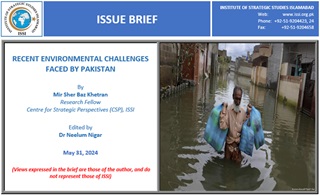Recently Pakistan has faced an uncommon environmental challenge: a winter marked by an absence of its usual rainfall and snowfall in the north, while, in the southeast, an unprecedented cold wave left Sindh in a chill. Karachi experienced temperatures dropping to 11 degrees Celsius in March 2024, marking the coldest March since 1979. Additionally, on February 29, 2024, the Balochistan government declared a state of emergency in Gwadar, classified it as a calamity-stricken area following extensive damage caused by heavy rainfall in the city. This deviation from the ordinary prompts worries about the broader ramifications for the nation’s climate and ecosystems.[1]
Several factors contribute to the unusual weather variation in Pakistan, which include:
- Alterations in global climate patterns,
Global climate alterations profoundly affect Pakistan’s weather patterns. This includes increased temperatures due to global warming, intensifying heatwaves, droughts, and exacerbating water scarcity and agricultural challenges. These alterations disrupt traditional precipitation cycles, leading to irregular rainfall patterns. Some regions experience intensified rainfall, causing floods, while others face prolonged dry spells and droughts.[2]















